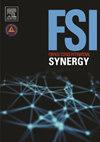审判中的算法:法医证据的评估概率报告是否侵犯了无罪推定?
Q1 Social Sciences
引用次数: 0
摘要
科学证据在刑事司法中发挥着重要作用。最近的技术发展,包括使用人工智能和先进的计算法医软件,使以前不可能的法医检查和专家意见成为可能。除了好处之外,在刑事审判中使用基于概率基因分型(PG) DNA等计算技术的法医证据也给法院带来了难题,并引起了争议。本研究的重点是围绕使用PG DNA证据的批评的一个重要方面,这与法医证据结果的概率报告有关。它探讨了使用似然比来报告评估专家意见是否侵犯了无罪推定。这是一个基本问题,不仅涉及基于先进计算技术(如PG DNA)的证据,而且涉及所有正在积极推广使用似然比和概率评估证据的法医学科。本文认为,在法律实践、学术辩论、政策和法律改革文件中遇到的对使用概率方法进行证据评估的批评,是基于对法医证据的作用和局限性、得出评估性专家意见所涉及的过程以及无罪推定本身的意义和范围的误解。加强对这些基本问题的理解将有助于更好地监管跨司法管辖区的人工智能和法医算法,同时不会削弱科学证据在刑事诉讼及其他方面的影响。本文章由计算机程序翻译,如有差异,请以英文原文为准。
Algorithms on Trial: Does evaluative probabilistic reporting of forensic evidence infringe the presumption of innocence?
Scientific evidence plays an important role in criminal justice. Recent technological developments including the use of AI and advanced computational forensic software have made possible forensic examinations and expert opinions that previously would have been impossible. Alongside benefits, the use in criminal trials of forensic evidence based on computational technologies such as Probabilistic Genotyping (PG) DNA, is posing difficult problems for courts and has been met with controversy. This study focuses on one important aspect of the criticism surrounding the use of PG DNA evidence, which relates to the probabilistic reporting of the forensic evidence results. It explores whether the use of likelihood ratios to report evaluative expert opinions infringes the presumption of innocence. This is a fundamental question that concerns not only evidence based on advanced computational technologies such as PG DNA but all forensic disciplines where the use of likelihood ratios and probabilistic assessments of the evidence are being actively promoted. This article argues that the criticism on the use of probabilistic methods for evidence evaluation encountered in legal practice, scholarly debate, policy and legal reform documents, is founded on misunderstandings of the role and limitations of the forensic evidence, of the processes involved in arriving at an evaluative expert opinion, as well as of the meaning and scope of the presumption of innocence itself. An enhanced understanding of these fundamental issues will lead towards a better regulation of AI and forensic algorithms across jurisdictions, without diminishing the impact of the scientific evidence in criminal proceedings and beyond.
求助全文
通过发布文献求助,成功后即可免费获取论文全文。
去求助
来源期刊

Forensic Science International: Synergy
Social Sciences-Law
CiteScore
4.90
自引率
0.00%
发文量
75
审稿时长
90 days
 求助内容:
求助内容: 应助结果提醒方式:
应助结果提醒方式:


